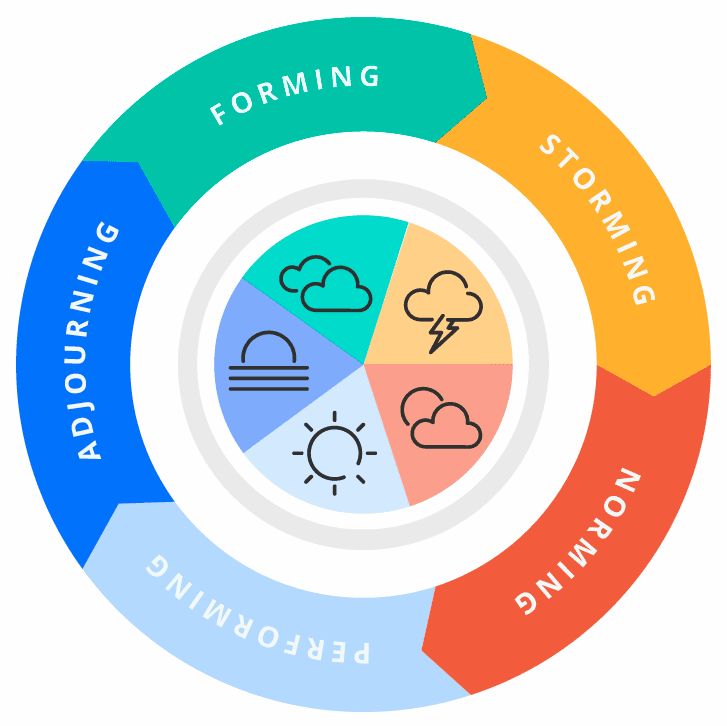TEAM BUILDING STAGES
TEAM BUILDING STAGES
("F.O.STO.N_ P.A.D" )
✅ Forming stage.
✅ Storming stage.
✅ Norming Stage.
✅ Performing Stage.
✅ ADdjourning Stage.
Team building typically progresses through several stages, as identified by psychologist Bruce Tuckman’s model (1965). These stages describe how teams develop, face challenges, and ultimately achieve high performance. Here are the five key stages of team building:
1. Forming
Characteristics: Team members are polite, excited, but uncertain about roles and goals.
Focus: Orientation, introductions, and understanding objectives.
Leader’s Role: Provide clear direction, establish goals, and encourage open communication.
2. Storming
Characteristics: Conflicts arise as team members express differing opinions. Power struggles may occur.
Focus: Resolving conflicts, clarifying roles, and setting norms.
Leader’s Role: Mediate disagreements, reinforce team values, and ensure constructive feedback.
3. Norming
Characteristics: Team cohesion improves, trust builds, and collaboration increases.
Focus: Establishing workflows, mutual respect, and shared accountability.
Leader’s Role: Empower team members, delegate tasks, and encourage participation.
4. Performing
Characteristics: High productivity, strong teamwork, and autonomy in problem-solving.
Focus: Achieving goals efficiently with minimal supervision.
Leader’s Role: Provide support when needed, recognize achievements, and foster innovation.
5. Adjourning (or Mourning) (Added later by Tuckman in 1977)
Characteristics: Team disbands after completing the project (common in project-based teams).
Focus: Reflecting on accomplishments and transitioning members.
Leader’s Role: Celebrate success, provide closure, and support members in moving forward.
Key Takeaways
Not all teams move linearly—some may revisit earlier stages.
Effective leadership and communication are crucial at every stage.
Understanding these phases helps in managing team dynamics proactively.










.jpg)



Comments
Post a Comment